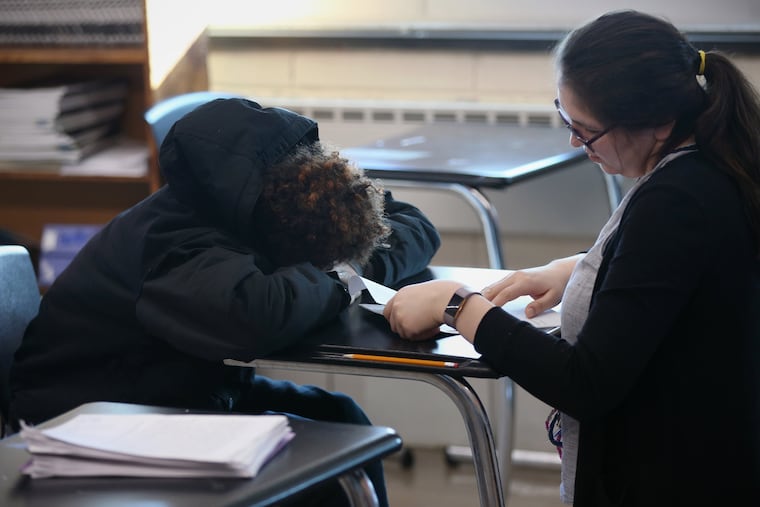Starting high schools at 9 a.m. is a good idea | Opinion
Students who have had enough sleep are able to maximize their academic, physical, and emotional well-being.

Last month, when I learned that classes at most Philadelphia public high schools would begin at 9 a.m. starting in the 2022-23 academic year, I felt one thing: gratitude. As a certified school psychologist with over 25 years of experience in the Bensalem Township School District in Bucks County, I work closely with teens, many of whom would benefit immensely from a change of this kind.
Each adolescent has a biologically driven clock in their bodies — a set of circadian rhythms that dictate when they fall asleep and wake up. The 9 a.m. start time aligns much better with that internal clock, and will enable students to arrive to school well-rested. This will have a profound effect on their academic, physical, and emotional well-being. I know first-hand from my work in school psychology that the pandemic has impacted our students’ mental health and academic performance. Nothing could be more important than school systems implementing measures to help remediate these challenges.
Clear, robust, and irrefutable research shows that secondary students with later start times not only get better sleep but also have improved academic performance and led to fewer absences and late arrivals, discipline issues, symptoms of depression and anxiety, drug and alcohol misuse, and car crashes. And these later starts don’t seem to interfere with after-school activities, which adjust to fit the new schedules. Recent research also suggests that students from disadvantaged socioeconomic communities show disproportionately greater academic improvements from later start times than peers, suggesting that this change could help narrow the achievement gap.
During adolescence, there is a biological shift in circadian sleep rhythms. Like other hormonal shifts during puberty, teens experience a delay in the sleep cycle, making it hard for most to fall asleep early enough to get the needed 8-10 hours per night. Requiring teens to be up at 6 a.m. to travel to school, often in the dark, and start learning at 7:30 a.m., means that they have to wake up during their last and most significant phase of sleep, when memory consolidation and emotional regulation is solidified. These aspects of brain development are essential for teens.
» READ MORE: Starting high schools at 9 a.m. is a bad idea | Opinion
Many school districts in our region and beyond have successfully delayed their high school start times. And it does not necessarily require an equivalent delay to the end of the school day. The 2019 Pennsylvania Joint State Government Commission report outlines how school districts can reduce minutes in the day to end earlier, so teens aren’t walking home in the dark. Although time spent in core classes needs to meet state regulations, schools can decide to shorten passing time and non-academic periods such as assemblies, homeroom, or lunch. Schools can also cut short after-school activities, such as team practices and clubs, so that activities do not end too late. And some working parents won’t mind later start times for high school sports, which could make it easier for some to attend.
“Any challenges to a 9 a.m. start time are often temporary and resolvable inconveniences at worst — all of them minor compared to the benefits of starting high school later.”
For our athletes, we need to consider lighted fields for later games. Since athletes are sometimes dismissed early for games, Radnor High School creatively scheduled their athletes for a physical education class during the last period of the day to avoid missing core subjects.
Some critics have expressed concerns about teens traveling in the dark at the end of the school day. Yet during the winter months, these same students travel in the dark in the morning hours, when they are less likely to be alert.
As the pandemic has made it abundantly clear, there are plenty of opportunities for creative educational solutions when we put children first. We are all more resilient and adaptable than we’ve previously imagined. Any challenges to a 9 a.m. start time are often temporary and resolvable inconveniences at worst — all of them minor compared to the benefits of starting high school later.
Gail R. Karafin is a licensed and school certified psychologist who has been a school psychologist with the Bensalem Township School District for over 25 years.